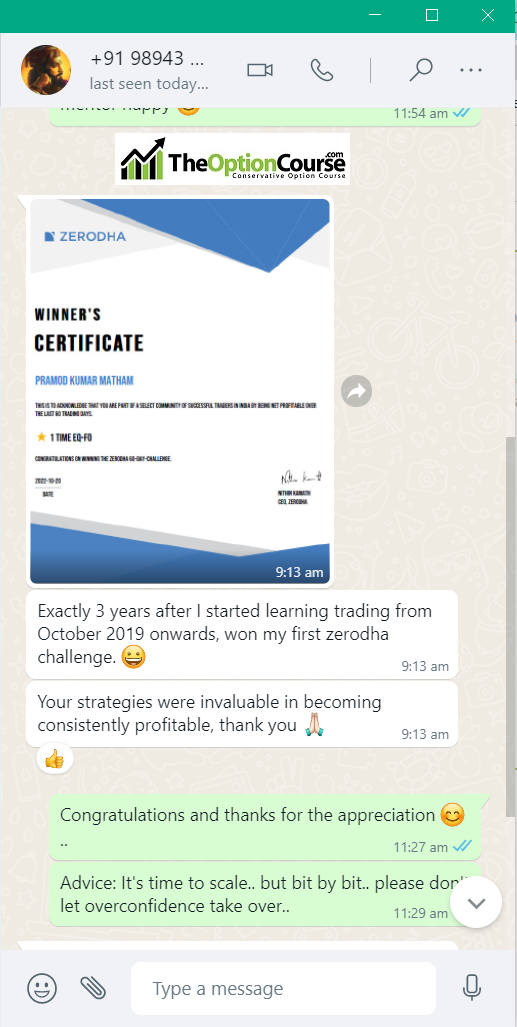Disclaimer: I DO NOT give tips or advisory services. This website is for educational purposes only. Full Disclaimer!!
For option traders, India VIX is a very important factor that helps to make a decision. It’s a Volatility Index based on the index option prices of NIFTY F&O segment only not any other index like BSE or MCX.
India VIX is a volatility index based on the index option prices of NIFTY. India VIX is computed using the best bid and ask quotes (the difference between quotation of sellers and buyers of options at different strikes) of the out-of-the-money of near and mid-month NIFTY option contracts which are traded on the F&O segment of NSE. India VIX indicates the investor’s perception of the market’s volatility in the near term. The index depicts the expected market volatility over the next 30 calendar days. i.e. higher the India VIX values, higher the expected volatility and vice-versa.
What does India VIX indicate?
India VIX indicates the investor’s perception of the market’s future volatility (not more than a month). The index depicts (or assumes not guarantees) the expected market volatility over the next 30 calendar days. If the computation generates higher India VIX it is assumed that the volatility in NSE F&O segment is going to be high and if the computation generates lower India VIX it is assumed that the volatility in near future is going to be low.
Which option strikes are most affected by increasing or decreasing VIX?
When a low/high VIX is generated the most effected option strikes are At-The-Money (ATM) options. Please note that ATM and OTM options are made of Theta (time) value and VIX factor only. Rest of then factors do not affect much. You can read more on Option Greeks here. The most affected options are At The Money (ATM) and Out Of the Money (OTM) calls and puts that are more than 23 days from expiration and less than 37 days from expiration for Nifty. Please note that these are most traded highly liquid options.
Since now nifty weekly options are traded, each week, the contracts and the calculations roll to the next maturity week. As one week expires, then the pricing of the options expiring next week is effected.
Reference Read: https://www1.nseindia.com/content/indices/India_VIX_comp_meth.pdf
Chicago Board Options Exchange has written an in-depth white paper on how VIX is calculated – please note that NSE calculates India VIX on the same lines so if you want to read you can get it here:
https://www.cboe.com/micro/vix/vixwhite.pdf
And if you are in a hurry here is the formula of how VIX is calculated (warning – very complicated):
Why deep Out-Of-Money (OTM) and In-The-Money (ITM) options are not much affected by increasing or decreasing India VIX?
Because after 5% distance from near the money options there is not much left in them to increase or decrease. If their value is increased too much option sellers will be at a benefit. This is not good for option buyers so there are not many significant changes done to deep out of the money options calls or puts when India VIX increases or decreases.
How can a trader take a decision based on high or low India VIX?
Since high India VIX indicates volatility in the markets a Future Traders can keep their stop loss levels less than normal days. Or if they are not comfortable to bring the stop loss levels near then they should increase the levels where they book profits. You will not find this in any book please note this down in your trading diary.

Click to Share this website with your friends on WhatsApp
COPYRIGHT INFRINGEMENT: Any act of copying, reproducing or distributing any content in the site or newsletters, whether wholly or in part, for any purpose without my permission is strictly prohibited and shall be deemed to be copyright infringement.
INCOME DISCLAIMER: Any references in this site of income made by the traders are given to me by them either through Email or WhatsApp as a Thank You message. However, every trade depends on the trader and his level of risk-taking capability, knowledge and experience. Moreover, stock market investments and trading are subject to market risks. Therefore there is no guarantee that everyone will achieve the same or similar results. My aim is to make you a better & disciplined trader with the stock trading and investing education and strategies you get from this website.
DISCLAIMER: I am NOT an Investment Adviser (IA). I do not give tips or advisory services by SMS, Email, WhatsApp or any other forms of social media. I strictly adhere to the laws of my country. I only offer education for free on finance, risk management & investments in stock markets through the articles on this website. You must consult an authorized Investment Adviser (IA) or do thorough research before investing in any stock or derivative using any strategy given on this website. I am not responsible for any investment decision you take after reading an article on this website. Click here to read the disclaimer in full.

My student gets the Winner's Certificate of Zerodha 60-day Challenge - Click here and Open Stock Buy and Sell Free Account with Them Today!!!

 Testimonial by a Technical Analyst an Expert Trader - Results may vary for users
Testimonial by a Technical Analyst an Expert Trader - Results may vary for users
 60% Profit Using Just Strategy 1 In A Financial Year – Results may vary for users
60% Profit Using Just Strategy 1 In A Financial Year – Results may vary for users

 Testimonial by Housewife Trader - Results may vary for users
Testimonial by Housewife Trader - Results may vary for users